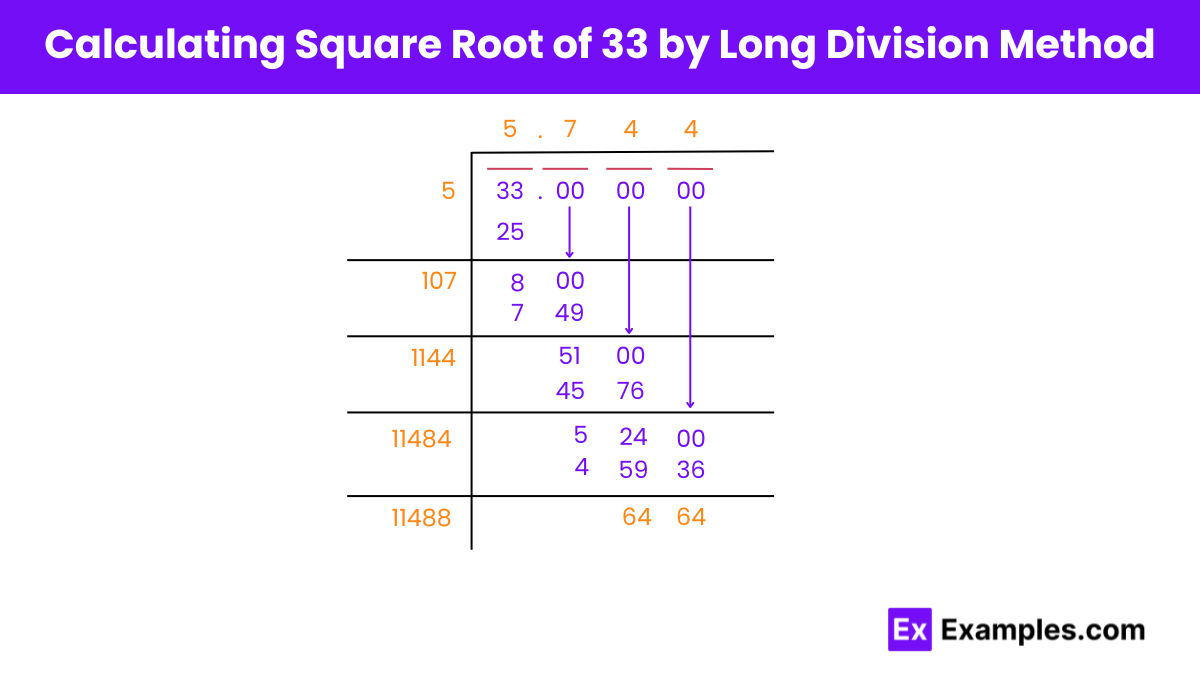What is the square of 33?
1089
1024
1210
1156


Within algebraic studies, the significance of squares and square roots is foundational. Squaring, exemplified by multiplying a number like 33 by itself to yield 1089, is fundamental. This operation underpins investigations into properties of rational and irrational numbers. Understanding these concepts enriches comprehension of mathematical relationships and patterns, crucial in algebraic studies and beyond. In the realm of mathematics, squares and square roots are pivotal. Squaring, demonstrated by multiplying 33 by itself to produce 1089, serves as a cornerstone. This process facilitates exploration into the properties of both rational and irrational numbers, deepening comprehension of mathematical relationships and patterns within algebraic studies and beyond.
A square number, such as 33, results from multiplying an integer by itself. The square of 33 equals 1089. This fundamental operation illuminates algebraic principles, showcasing the inherent properties of rational and irrational numbers, enriching understanding of mathematical relationships and patterns within the realm of algebraic studies.
√33 = 5.744
Or
√33 = 5.744 Upto 3 decimals
The square root of 33, a non-square number, is an irrational number approximately equal to 5.744. Understanding square roots involves finding the number that, when multiplied by itself, equals 33. Mastery of square roots unveils fundamental mathematical concepts, essential for exploring algebraic relationships and patterns.
Square Root of 33: 5.744
Exponential Form: 33^½ or 33^0.5
Radical Form: √33
The square root of 33 is an irrational number
The square root of 33 is irrational. It cannot be expressed as a fraction of two integers, and its decimal representation continues infinitely without repeating. Thus, it falls under the category of irrational numbers.
Rational Numbers: Rational numbers can be expressed as fractions of two integers, like 3/4 or -5/2.
Irrational Numbers: Irrational numbers cannot be written as fractions of integers. Their decimal expansions neither terminate nor repeat. For instance, the square root of 2 (√2) ≈ 1.41421356… is irrational.
Several methods can be used to find the square root of 33:
Estimation Method: Make an initial guess, then refine it iteratively using approximation techniques like the Newton-Raphson method.
Prime Factorization Method: Express 33 as a product of prime factors (3 × 11), then find the square root of each prime factor.
Long Division Method: Apply long division to iteratively find the digits of the square root.
Calculator: Utilize a calculator with a square root function to directly compute the square root of 33.

Finding the Square Root of 33 Using the Long Division Method
Step 1: Setup
Write 33 as 33.000000 (to facilitate the long division process).
Step 2: Initial Division
Divide 33 by a number such that the number multiplied by itself gives 33 or a number less than that. Since 5 × 5 = 25, use 5 as the initial divisor. Subtracting 25 from 33 yields 8. Bring down a pair of zeros, making the new dividend 800.
Step 3: Iterative Division
Step 4: Final Result
Repeat the process until the desired level of accuracy is achieved. Thus, the square root of 33 is approximately 5.744, rounded to the nearest thousandth.
No, 33 is not a perfect square number
No, 33 is not a perfect square. A perfect square is a number that can be expressed as the product of an integer multiplied by itself. Since there are no integers where the product of the integer with itself equals 33, it is not a perfect square.
The square of 33 is a positive integer, while the square root of 33 is a positive irrational number.
You can verify your calculation by squaring the square root value obtained. If the result is 33, then your calculation is correct.
Understanding squares and square roots is essential in various fields such as engineering, physics, computer science, and finance for tasks like calculating areas, distances, and determining quantities.
The decimal representation of the square root of 33 is non-repeating and non-terminating, indicating no discernible pattern in its digits.
Understanding squares and square roots serves as a foundational step in algebra, helping to comprehend concepts like equations, inequalities, and polynomial functions.
Text prompt
Add Tone
10 Examples of Public speaking
20 Examples of Gas lighting
What is the square of 33?
1089
1024
1210
1156
What is the square root of 1089?
32
33
34
35
If the square of a number is 1089, what is the number?
32
33
34
35
What is the approximate value of the square root of 33?
5.74
5.80
5.67
5.90
Which number squared gives 1089?
30
33
36
39
The square root of 33 is closest to which integer?
5
6
7
8
What is the result of squaring the square root of 33?
33
34
35
36
If you take the square root of 33 and then square the result, what do you get?
22
33
44
66
What is 33 squared plus 1?
1090
1091
1100
1089
Which value is the result of squaring 33 minus 100?
989
1089
999
1098
Before you leave, take our quick quiz to enhance your learning!

